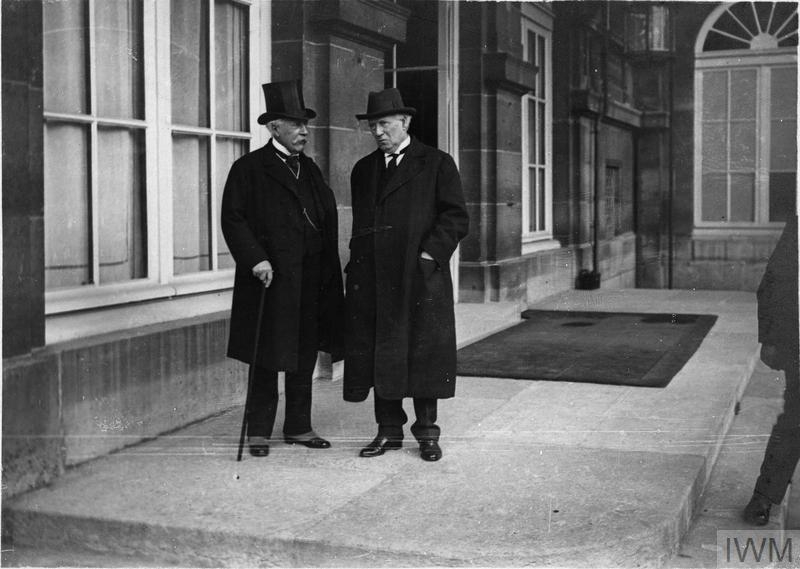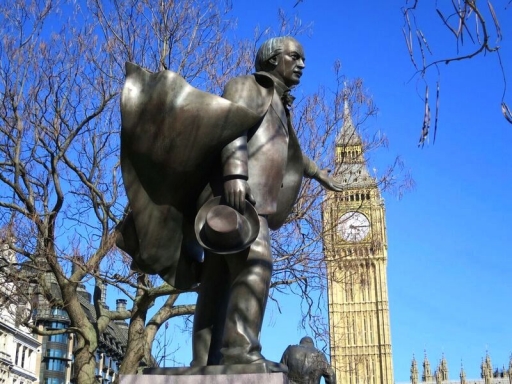David Lloyd George took office as British Prime Minister on 7 December 1916, replacing Herbert Henry Asquith.
HH Asquith led the country into the First World War in August 1914. But after more than two years of conflict, he was forced to resign amid mounting criticism of his leadership and conduct of the war.
Lloyd George had made his name with radical welfare reforms as Chancellor of the Exchequer (finance minister) in Asquith’s Liberal government before the war.
The Welsh politician reinforced his reputation after he was appointed Munitions Minister in a new coalition government in May 1915 to address a public outcry over a shortage of shells for the army.
Under his leadership, the newly-created Munitions Ministry boosted production, notably bringing in many women to replace men who’d gone to the front.
Lloyd George became Secretary of State for War in June 1916, following Lord Kitchener’s death in the sinking of HMS Hampshire.

Herbert Asquith (right) with Francis Bertie, British Ambassador to France, at the Allied Conference in Paris, November 1916 (Photo © IWM Q 78836)
By late autumn, as the Battle of the Somme drew to a close, moves by Lloyd George and his Conservative supporters in the coalition to put him in charge of directing the war threatened to sideline Asquith.
The crisis came to a head in the opening days of December, summed up in these comments, reported by The Daily Telegraph, from a newspaper sympathetic to the War Minister:
“Mr Lloyd George has arrived at the definite conclusion that the methods of dilatoriness, indecision and delay which characterise the action of the present War Council are such, in his opinion, as to the endanger the prospects of winning the war.”
Asquith resigned – less than three months after his own son, Lieutenant Raymond Asquith, had been killed on the Somme.
Lloyd George took office on 7 December 1916, leading Britain to victory at the end of the Great War, and representing the country at the Versailles peace conference in 1919.
Sources: Wikipedia/UK Parliament/Telegraph Archive/various
Images courtesy of Imperial War Museums © IWM (Q 78836) – Asquith in Paris; Centenary News – Lloyd George statue
Posted by: CN Editorial Team
